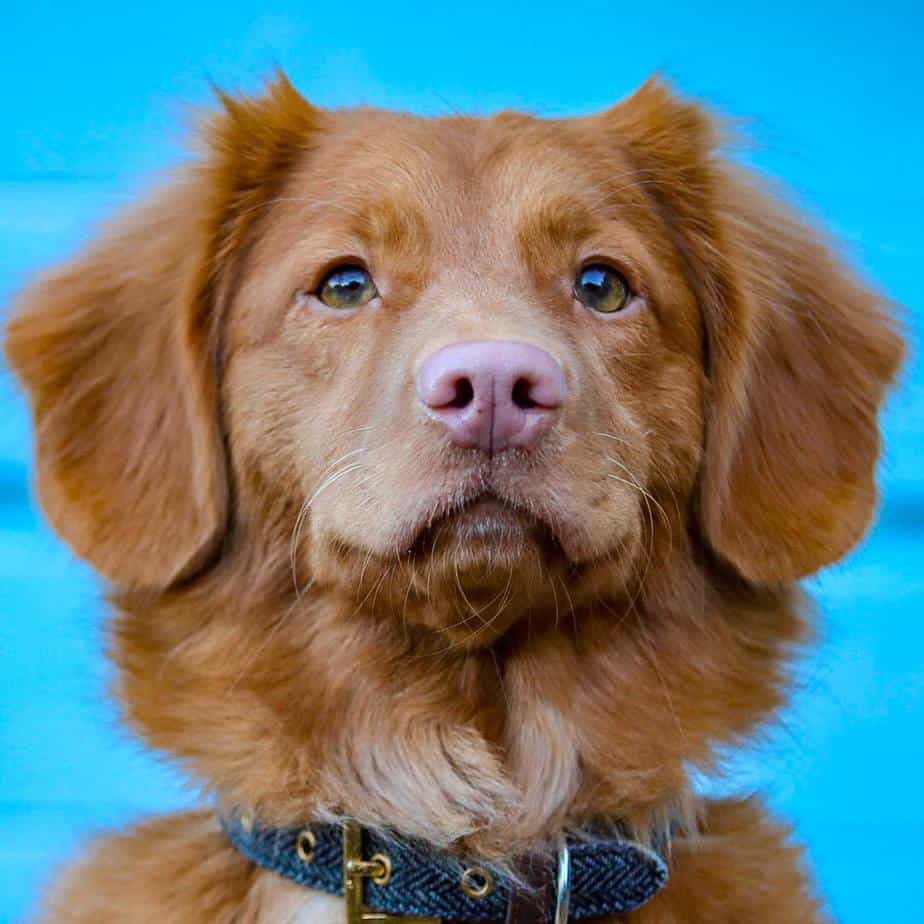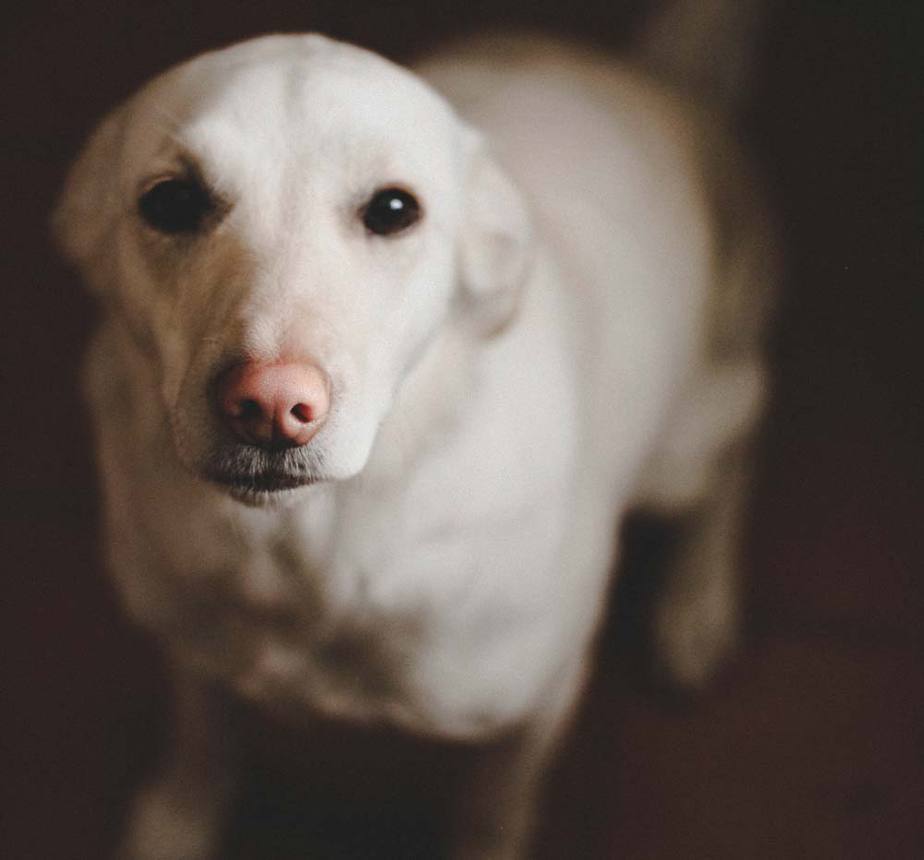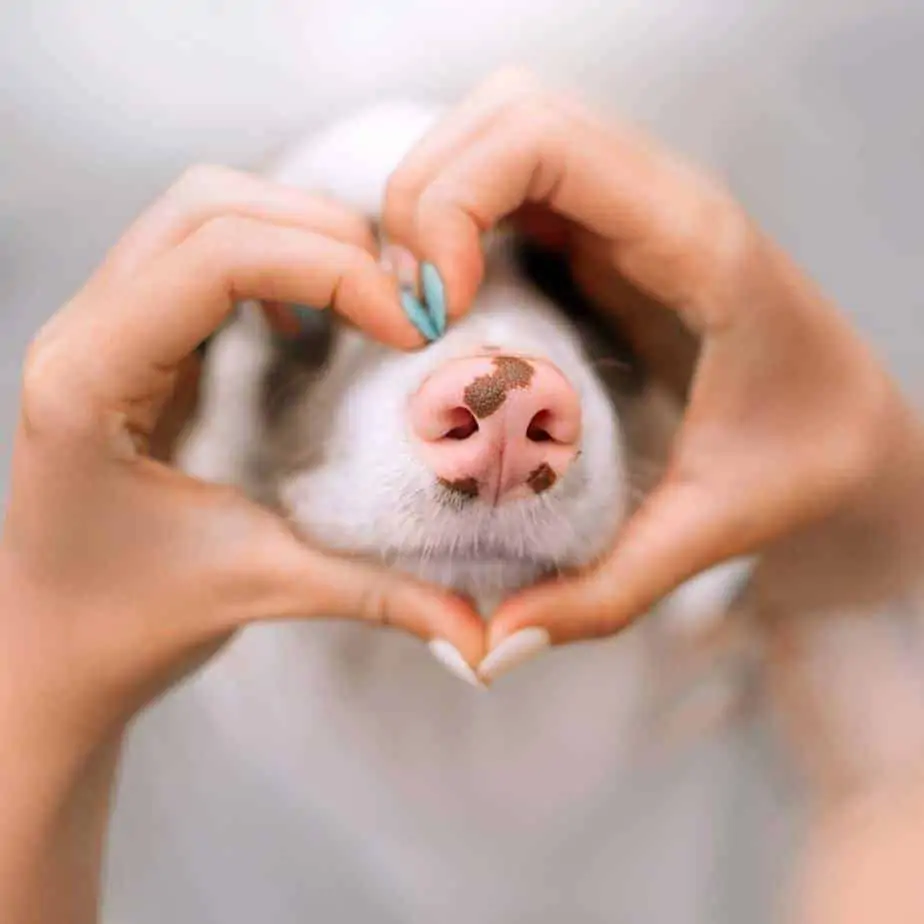Puppies are often born with pink noses. Depending on their breed, it’s likely they will outgrow this stage, and their nose will darken over time until it’s completely black. How long this takes will depend on your puppy’s breed.
Will My Puppy Always Have a Pink Nose?
There are some breeds that are more likely to be born with a pink nose than others. And some of those breeds will retain them throughout their lives.
Common breeds of pink nose dogs:
- Shetland Sheepdog
- Field Spaniel
- Pointer
- English Springer
- Cocker Spaniel
- Australian Shepherd
- Siberian Husky
- Nova Scotia
- Bull Terrier
- Boxers
- Dalmatian
- Heeler
- Sharpei
- Chow Chow
- Pitbull
- Ridgeback
This list is not all-inclusive and there are outliers.
Breeds often born with pink noses and likely to turn black:
- Beagle
- Border Collie
- Pug
- French Bulldog
- Labrador Retriever
- Golden Retriever
- Poodle
- Irish Setter
- Samoyed

This young puppy will almost certainly have a black nose in time. The breed and age will determine the likelihood of a change in color.
How Will I Know if it Will Change
If your puppy has a splotchy nose that is pink and black, then it’s probable it will turn black within 8 to 12 weeks. If your puppy has a splotchy nose that is pink and liver color, then it’s probable they will end up with a liver color nose.
Only time will truly tell if their nose will change to black or not. Although not always, their nose most likely won’t remain splotchy and will change one way or another to become a complete color.
There are dogs that retain a splotchy nose color, however, which is called a Butterfly nose. These dogs are usually among the breeds in the first list in this post.
Are you interested in our blog post: Is it OK to play rough with your puppy?
Or our guide on leaving your dog home alone, how long is OK?
How Long Will It Take to Change Color?
You will notice early on if your puppy’s nose is going to change from pink to black. In their first 8 to 12 weeks you will see a dramatic change in pigment. If your puppy’s nose hasn’t fully darkened by now, then there’s still a chance it will change over the next several months.
There are instances where puppies have grown into full adults before their nose pigment changes from pink to black, even as long as 3-years.
Types of Pink Noses
There are different categories of dog nose pigmentation and while some are associated with the breed themselves, other causes are related to weather or medical issues.
Liver nose (Pink nose)
These puppies will retain their pink, liver-colored nose, their entire lives, and is reasonably common in the dogs that have this feature in their gene pool.

This beautiful dog has a liver nose.
Dudley nose
A Dudley nose is exactly the same as a pink nose or liver nose, however the term is usually used for dog breeds that aren’t supposed to have a pink nose. In this, it’s usually used as a term of fault in breeding.
The term Dudley is associated from a part of Black Country in Worcestershire where bulldogs were bred with pink, flesh-colored noses.

This retriever has a Dudley nose, and it can also occur later on in life, as the black pigment in their nose fades over time.
Butterfly Nose
Butterfly noses are those that are splotchy, with a mix of black and pink pigments.

This puppy has a Butterfly nose, and although it may become slightly more black, this particular breed can retain this look throughout their lives.
Snow Nose
Snow nose occurs during the colder months where the climate will actually change the color of the dog’s nose for a length of time. During the warmer months, the dog’s nose will return to darker pigments.

Sunburn and Care
If your puppy has a pink nose, then be sure to use some sunscreen on it when you take them outside. Their nose will be sensitive to the sun and can burn easily.
If you have a breed that will likely retain their pink nose, then it will need to be something you are aware of whenever they’re outside. These breeds will be genetically predisposed to the sun and can have nasal solar dermatitis, also called, “Collie nose”. You can learn more about Collie Nose in this article by Iowa State University.
Without adequate sun care, sunburn on your puppy’s nose can eventually lead to skin cancer.
Final Word
Your puppy’s splotchy nose will likely change to black over the course of their first months. If it hasn’t done so by the time they’re one, then they will most probably retain their pink pigmented nose.
Chances are, if your puppy’s Mum and Dad had a black nose, then they will too.
Although this can be a fault for a show dog, it will not cause them any harm if adequately protected from the sun.




